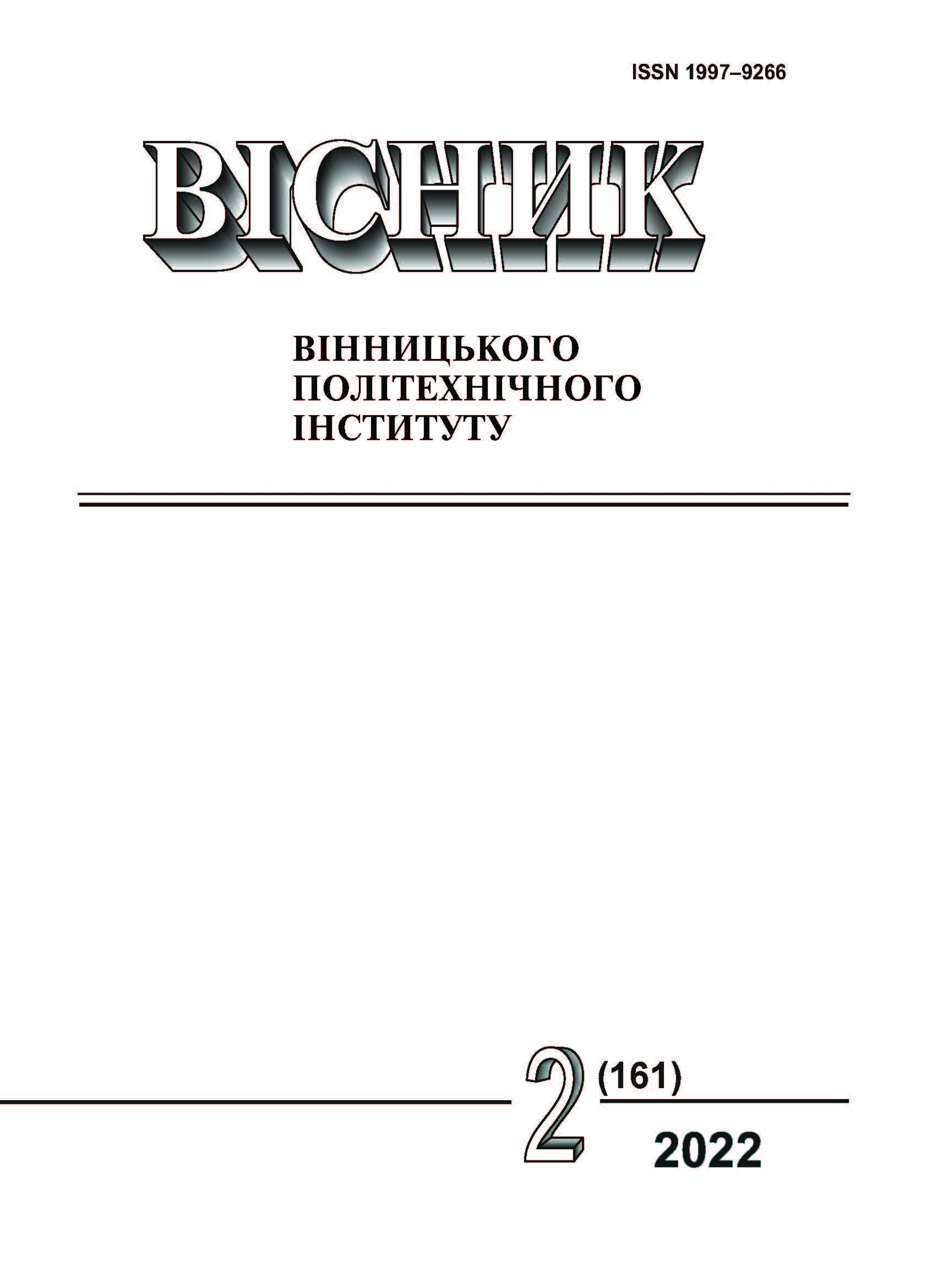ОРГАНІЗАЦІЙНО-ТЕХНОЛОГІЧНІ ЗАХОДИ ТЕРМОМОДЕРНІЗАЦІЇ ЗАСТАРІЛОГО ЖИТЛОВОГО ФОНДУ
DOI:
https://doi.org/10.31649/1997-9266-2022-161-2-6-17Ключові слова:
економія енергії, програми термомодернізації житла, соціальне житло, утеплення, житловий фонд, маневрений фондАнотація
Утримання житлового сектора економіки стало одним з найбільших і вагомих тягарів, який гальмує її розвиток. Наведені дані імпорту Україною енергетичних ресурсів та показано, що загальні витрати коштів на опалення будівель оцінювалися Урядом країни в окремі роки на рівні майже 9,0 % від ВВП країни.
Приведена питома вага типових серій малоповерхових будинків забудови 1960―1980 років, подані показники теплофізичних властивостей стінових матеріалів зовнішніх стін. Показник термічного опору огороджувальних конструкцій стін застарілих будинків більше ніж в 3 рази нижчий чинних нормативних показників.
Наведений аналіз сучасного стану нормативно-правового забезпечення реалізації термомодернізації застарілого житлового фонду. Більшість державних програм не могли бути реалізовані повною мірою через відсутність державної фінансової підтримки. Авторами наведений аналіз основних недоліків чинного законодавства, яке гальмувало термомодернізацію будинків масової забудови 60―80 років минулого століття.
Показано, що відносні обсяги будівництва житла в Україні в декілька разів нижчі ніж в сусідніх країнах, тому термомодернізація одночасно розв’язує декілька важливих задач ― зменшення споживання енергетичних ресурсів, подовження терміну служби застарілого житлового фонду та забезпечує отримання додаткового житла за рахунок надбудови та прибудови додаткових поверхів та секцій. На прикладі основних серій типових будинків запропоновані прийоми реконструкції (методами прибудови та надбудови). Наведені основні технологічні прийоми утеплення зовнішніх стін.
Запропоновано удосконалення чинного законодавства та створення сприятливих умов для будівництва соціального доступного житла, яке може виконувати функцію маневреного житлового фонду для прискорення термомодернізації застарілого житлового фонду. Європейська директива про енергетичну ефективність будівель 2010/31/EU з 31 грудня 2020 року передбачає будівництво нових будівель в країнах ЄС класу «А» ― майже з нульовим споживанням енергії (nearly zero-energy будівля). В умовах інтеграції нормативної бази будівництва України до вимог ЄС на першому етапі необхідний перехід від класу енергоефективності «С» до класу «В», а в подальшому ― і до класу «А».
Посилання
З. А. Гаевская, Ю. С. Лазарева, и А. Н. Лазарев, «Проблемы внедрения системы «зеленых» стандартов,» Молодой ученый, № 16, с. 145-152, 2015.
М. О. Жураковська, «Управління вартістю реновації житлового фонду,» Економічна думка, зб. наук. праць, Тернопільський національний економічний університет, т. 17, № 2, с. 30-46, 2014.
А. И. Менейлюк, И. Н. Бабий, и И. А. Менейлюк, «Влияние технологических особенностей устройства вентилируемых фасадных систем на их теплозащитные свойства,» Вісник ХНУБА, вип. 58, с. 131-135, 2014.
М. Д. Обідник, і І. Н. Дударь, Проблема застарілого житлового фонду в Україні та шляхи її вирішення. ВНТУ. Електронний ресурс. Режим доступу: https://conferences.vntu.edu.ua›itb›paper›view .
А. С. Максимов, і І. В. Вахович, «Вибір оптимальних технічних рішень термомодернізації будівель шкіл,» Шляхи підвищення ефективності будівництва в умовах формування ринкових відносин, вип. 45, Технічний, с. 106-117, 2020.
О. Г. Хохлов, В. І. Козарь, і Л. М. Козарь, «Житловий фонд України ― глобальні проблеми сьогодення. Економічні науки,» Вісник Хмельницького національного університету № 3, с. 207-211, 2019.
Г. І. Онищук, «Реконструкція житла в Україні: досвід, проблеми та шляхи їх вирішення,» Научно-технический сборник, № 59, с. 3-10, Державний науково-дослідний та проектно-дослідний інститут «НДІпроектреконструкція», Київ.
ДБН В.2.6-31:2016. «Теплова ізоляція будівель. Норми проектування. виготовлення і монтажу», Мінегіонбуд України, Чинний від 2017.01.01. Київ: вид. офіц., 2017, 33 с.
Т. А. Долбик-Воробей, Российская молодежь: проблемы и решения. М., РФ: Центр социального прогнозирования, 2005, 648 с.
Т. В. Сердюк, «Організаційно-економічні заходи кредитування термомодернізації застарілого житловоно фонд,» Сучасні технології, матеріали і конструкції в будівництві, с. 80-87, 2016.
М. М. Жербин, и В. И. Большаков, Новая концепция модернизации и надстройки существующих малоэтажных жилых зданий до любого количества этажей. Днепропетровск, Украина: Gaudemaus, 2000, 50 с.
Б. В. Дмитриев, и Г. Н. Якубович, «Реконструкция пятиэтажной массовой застройки и экономичные способы ее проведения,» Промышленное и гражданское строительство, № 8, с. 19-34, 1998.
В. Т. Шаленный, С. Ф. Акимов, и В. Д. Малахов, «Реконструкция жилых зданий одной их первых массовых серий с использованием многоэтажной надстройки из стали,» Экономика строительства и природопользования, № 3 (76), с. 108-122, 2020.
Фонд енергоефективності, [Електронний ресурс]. Режим доступу: https://eefund.org.ua/ .
N. Ruzhynska, O. Sadchenko, V. Lagodiienko, , I. Novykova, and O. Bogdanov, “Marketing Tools in Stimulating Innovative Activity of Enterprises,” International Journal of Management (IJM) ― Scopus Indexed, vol. 11, issue 6, June, pp. 241-251, 2020. [Electronic resource]. Available: www.scopus. com/.authid/detail.uri?authorId=57219234229 .
С. Б. Позмогова, и В. Р. Миначева, «Использование европейского опыта при реконструкции жилого фонда,» Вестник Ул ГТУ. Строительство, № 3, с. 53-56, 2011.
Закон України «Про житловий фонд соціального призначення,» Відомості Верховної Ради, № 19-20, с. 159, 2006.
Програми доступного житла: європейський досвід. [Електронний ресурс]. Режим доступу: http://www.molodkredit.gov.ua/news/npart/programi-dostupnogo-jitla-evropeyskiy-dosvid.html .
##submission.downloads##
-
pdf
Завантажень: 261
Опубліковано
Як цитувати
Номер
Розділ
Ліцензія

Ця робота ліцензується відповідно до Creative Commons Attribution 4.0 International License.
Автори, які публікуються у цьому журналі, згодні з такими умовами:
- Автори зберігають авторське право і надають журналу право першої публікації.
- Автори можуть укладати окремі, додаткові договірні угоди з неексклюзивного поширення опублікованої журналом версії статті (наприклад, розмістити її в інститутському репозиторії або опублікувати її в книзі), з визнанням її первісної публікації в цьому журналі.
- Авторам дозволяється і рекомендується розміщувати їхню роботу в Інтернеті (наприклад, в інституційних сховищах або на їхньому сайті) до і під час процесу подачі, оскільки це сприяє продуктивним обмінам, а також швидшому і ширшому цитуванню опублікованих робіт (див. вплив відкритого доступу).





